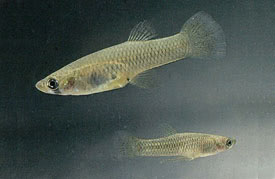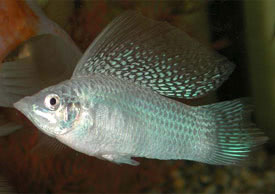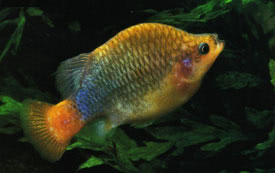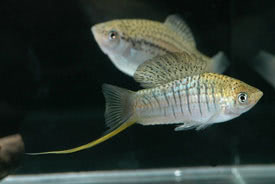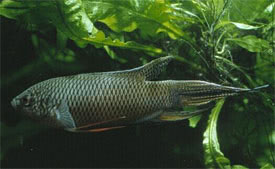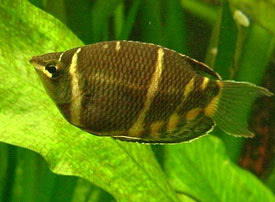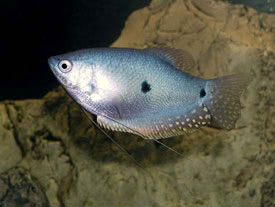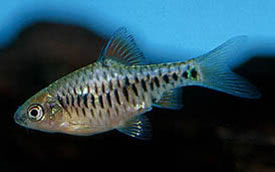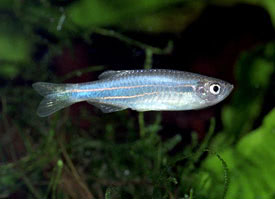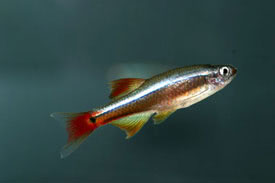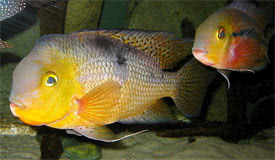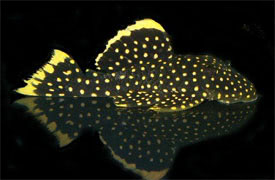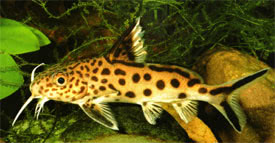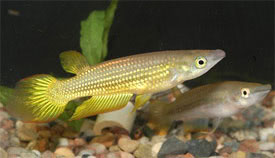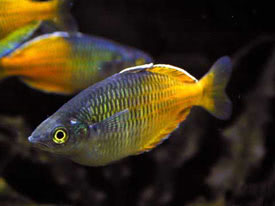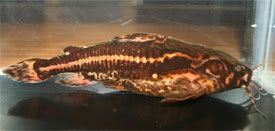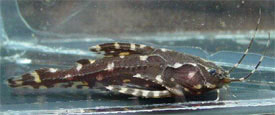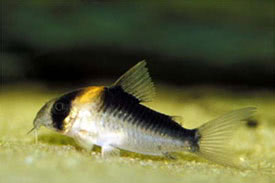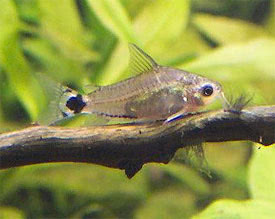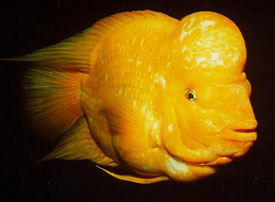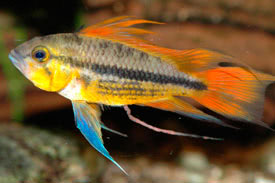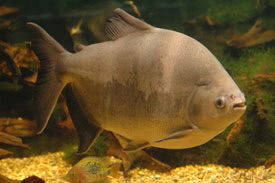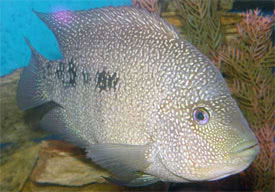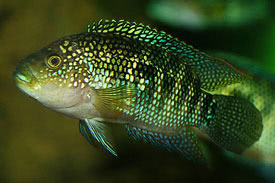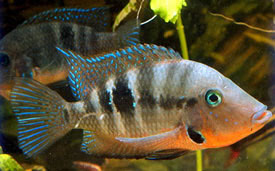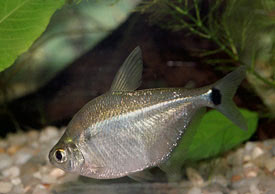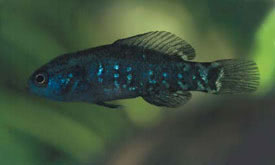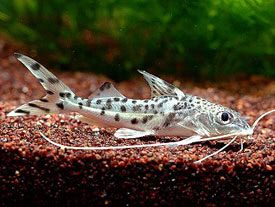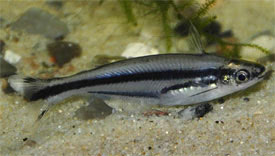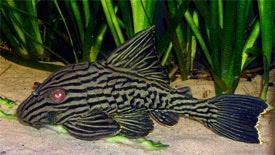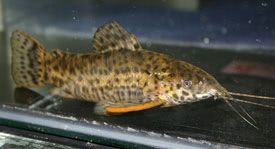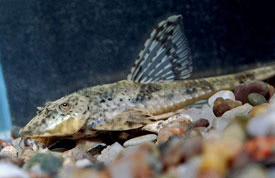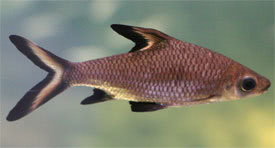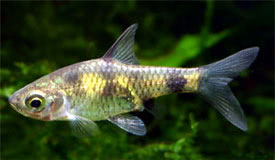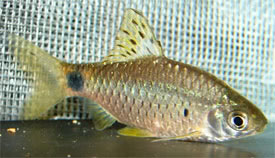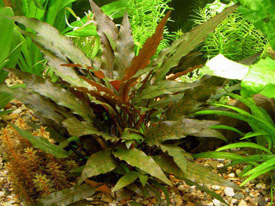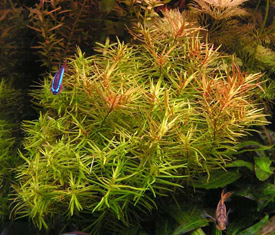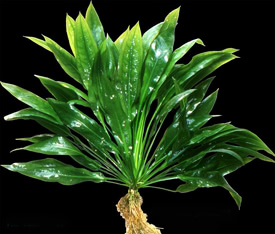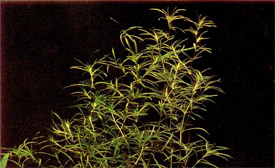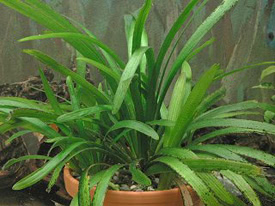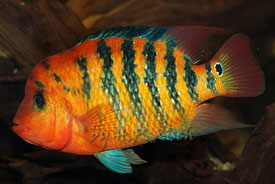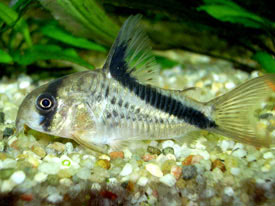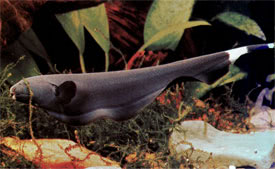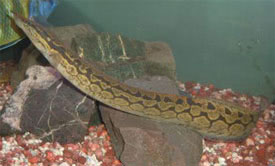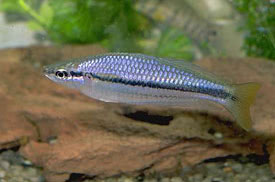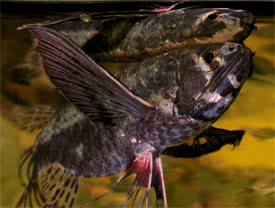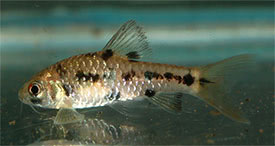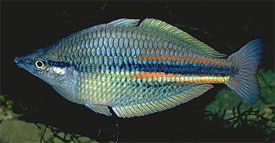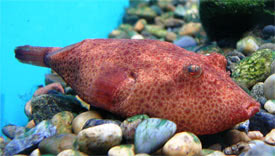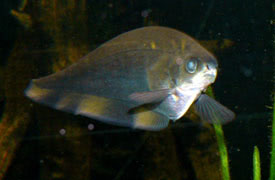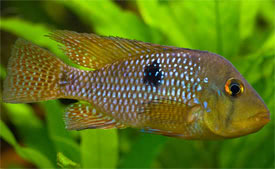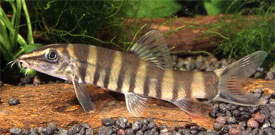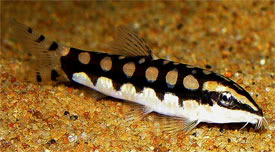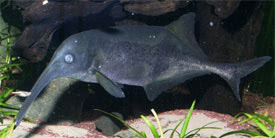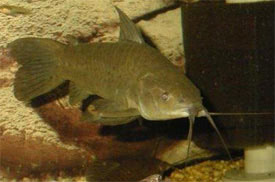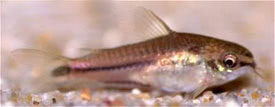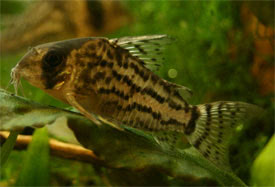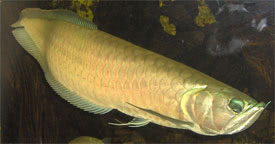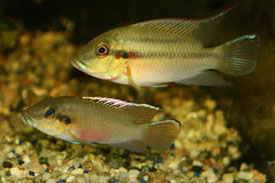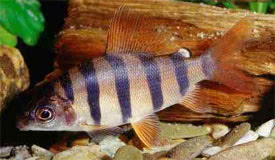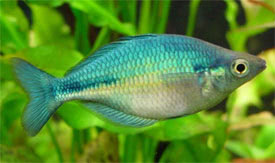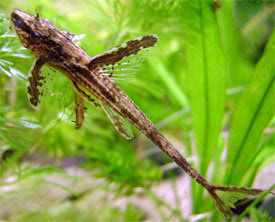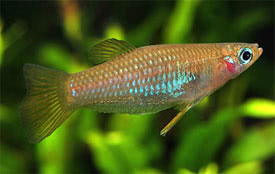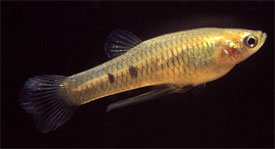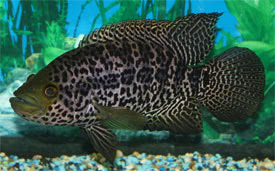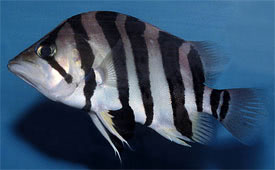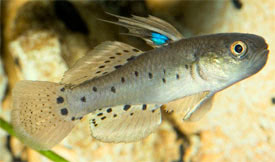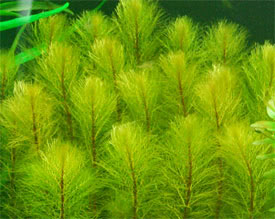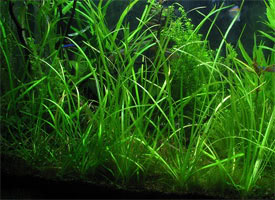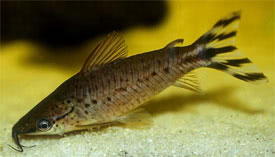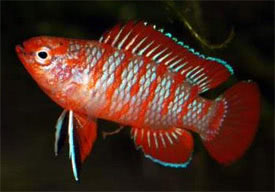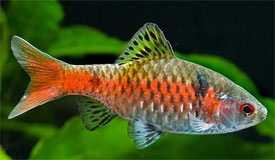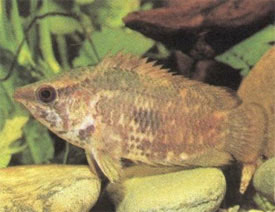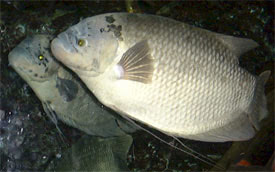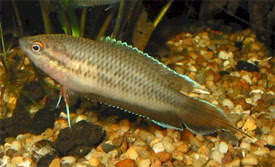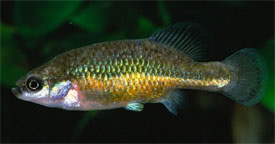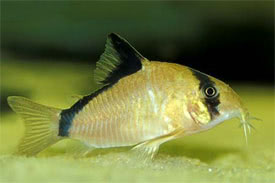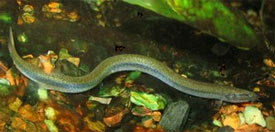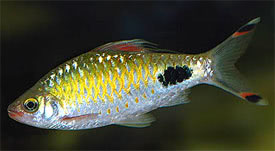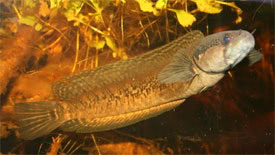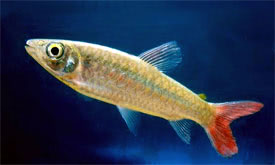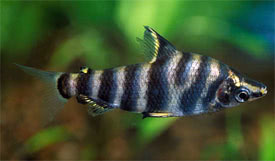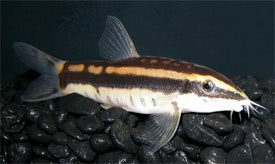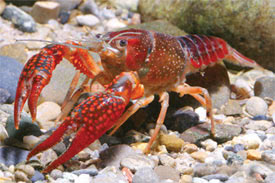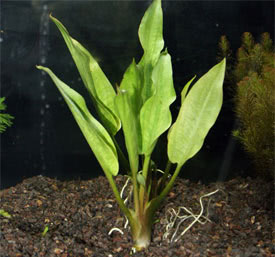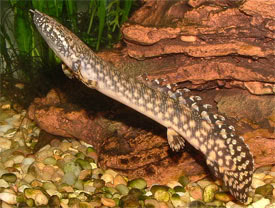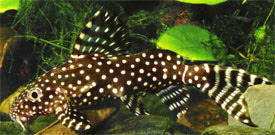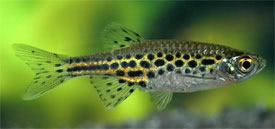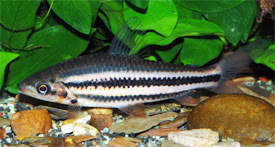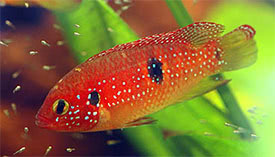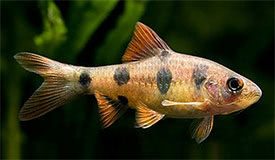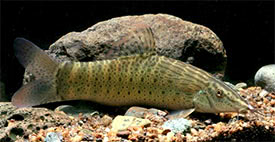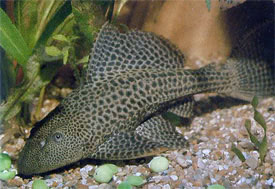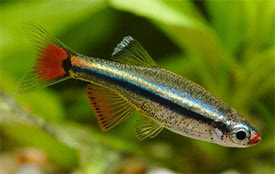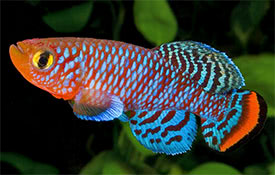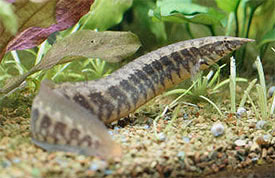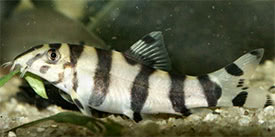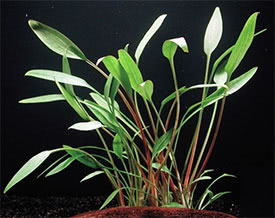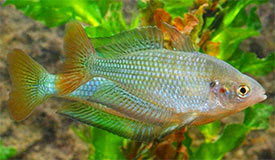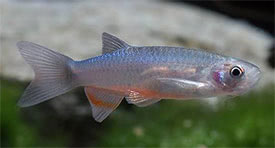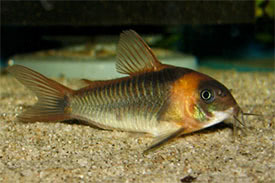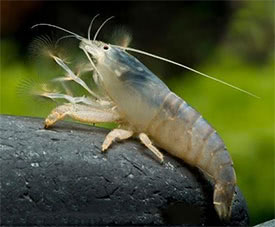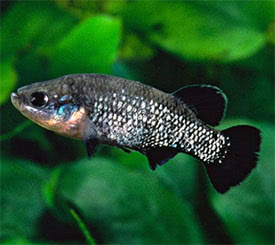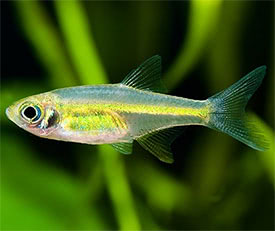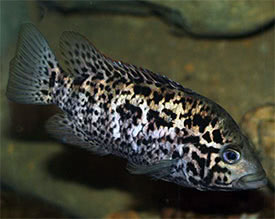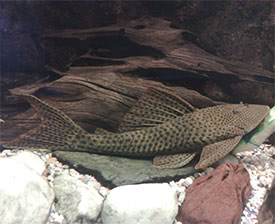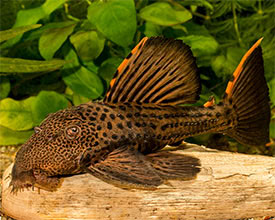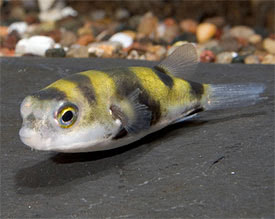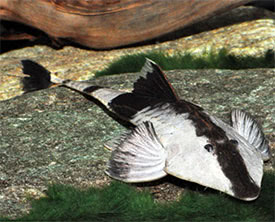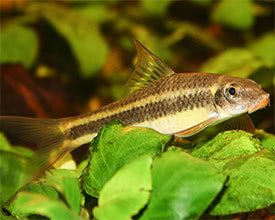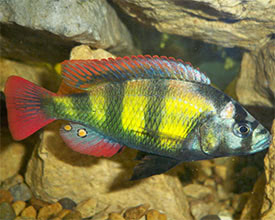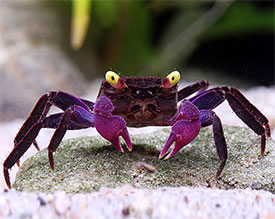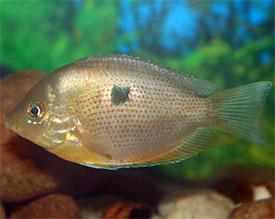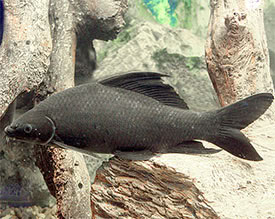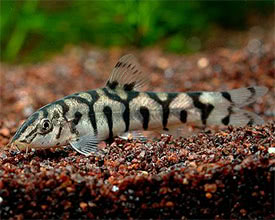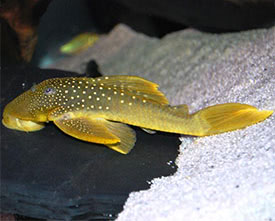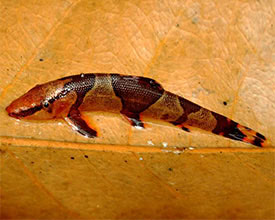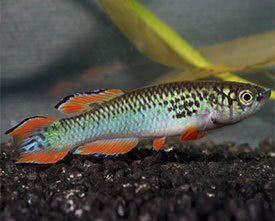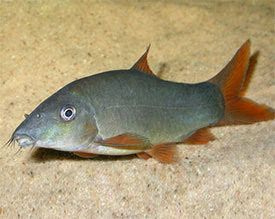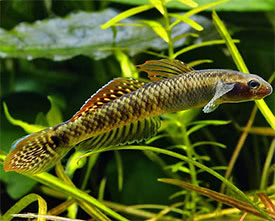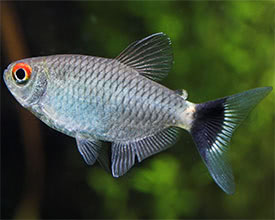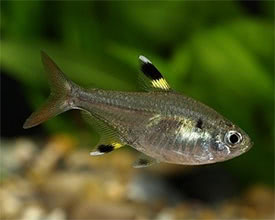
 Magyarul / Hungarian
Magyarul / Hungarian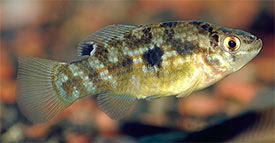
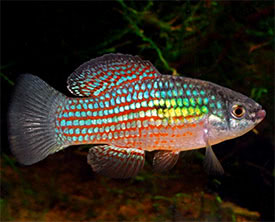
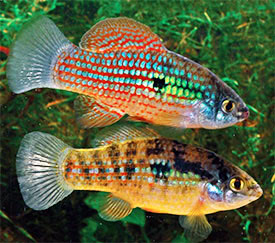
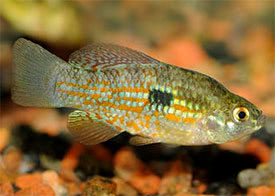
- Scientific name: Jordanella floridae
- Synonyms: Cyprinodon floridae (Goode & Bean, 1879)
- Common name: Florida Flagfish, American Flagfish
- Group: Killifish
- Habitat: North America; Endemic to peninsular Florida in St. Johns and Ochlocknee River drainages.
- Size: 5-5.5 cm
- Biotope: Mostly inhabits shallow, heavily vegetated waters, swamps, and ponds, but some populations are found in estuaries and in lightly brackish water.
- Social behavior: Males can be territorial and nippy. They should be kept in a species tank, especially when we want to breed them. In a larger tank even 2 or more males can be kept together, but in a smaller aquarium only one male should be kept.
- Diet: Omnivorous; They are micropredators in the wild, feeding on small aquatic crustaceans and worms, but they also eat algae and other plant material. In the aquarium they will eat small live and frozen foods, and without algae or any plant patter, they will start eating soft-leaved plants. They like filamentous algae!
- Breeding: Quite easy
- Tank: Minimum 55 litres
- Population: 1 male and 2-3 females for 70 litres
- Decoration: Provide many hiding places with driftwood and roots or plant the tank densely. The beautiful colors of the fish are more visible over dark substrate. Bright lighting may conduce algae growth what can be a good supplementary food for this fish.
- Temperature: 18-30 °C
- pH: 6.5-8.5
- Hardness: 2-20 NK°
- Lifespan: 3-5 years
Description: The American flagfish named for its color pattern, which evokes the stars-and-stripes pattern of the American flag. The sides of the male are olive green and the back is brownish. The flanks are dotted with rows of iridescent dots alternating between silver and red forming a pattern that resembles the stripes on a flag. Their unpaired fins are almost solid red. There is a dark black spot on the middle of their sides. Females are less colorful with their drab yellow base color and with their checkerboard pattern. They also have a large black spot on their flanks, and there is another bluish-black spot at the back of the dorsal fin. For long time this species has been ignored in the hobby, but nowadays it has been gaining popularity due to its algae-eating abilities. Possibly one of the best choices for beginners, because it is a hardy and adaptable killifish. If they are fed only on a diet of meaty foods, their lifespans will shorten drastically.
Sexes can be easily tell apart, as males grow a little larger, have more-extended dorsal and anal fins and have more vivid colors than females, especially during spawning. Their method of spawning tends to draw the most controversy as some reports say the males guard and take care of the eggs, while other reports say they do not exhibit any parental care. Some scientific papers say that this species breeds in the same way as other cyprinodontids and does not dig pits or take care of the eggs, but the male flagfish will often guard the area where the eggs have been laid and will chase away perceived threats, even the females, and he also fans the eggs. Many hobbyists claim that the male also removes infertile eggs.
In the nature they breed on a seasonal basis in spring and late summer when the water gets warmer. In the aquarium females depositing eggs on a more-or-less continuous basis when a warm temperature is maintained, but this should be permitted. For breeding the fish, set up a 40 litres tank with a big pile of Java moss and place a mature sponge filter into it. Males form temporary territories which they defend against rivals, while try to seduce females to spawn. Females will lay the eggs within this territory and the eggs will attach to any surface. Adult fish may eat some of the eggs when they left in the aquarium, but when plenty of cover is present fry will usually appear. Therefore adult fish should be removed from the tank. Eggs hatch in 7-14 days, and this depends on water temperature. The fry can be reared with brine shrimp nauplii after they are swimming-free.





